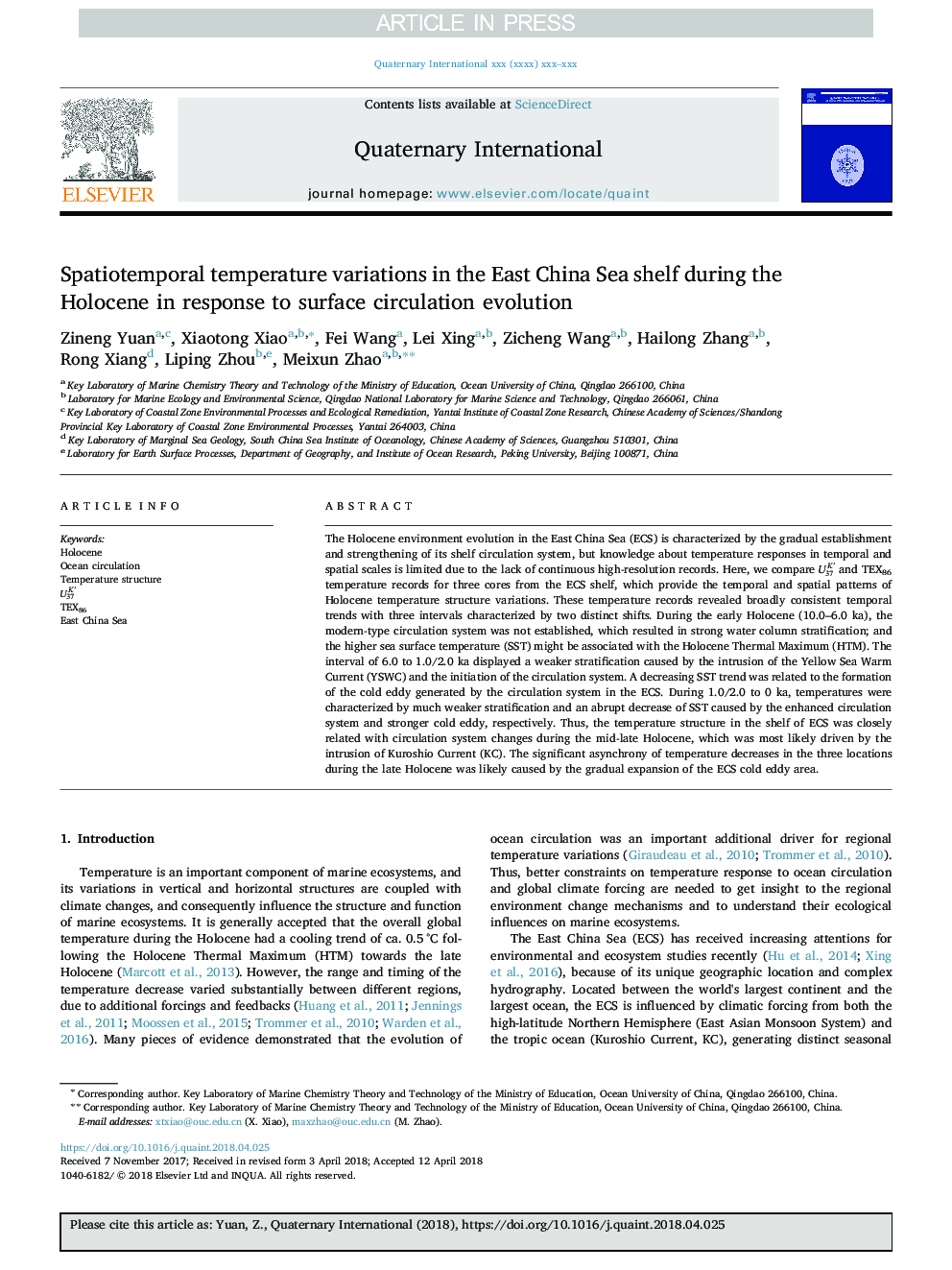| Article ID | Journal | Published Year | Pages | File Type |
|---|---|---|---|---|
| 7449178 | Quaternary International | 2018 | 10 Pages |
Abstract
The Holocene environment evolution in the East China Sea (ECS) is characterized by the gradual establishment and strengthening of its shelf circulation system, but knowledge about temperature responses in temporal and spatial scales is limited due to the lack of continuous high-resolution records. Here, we compare U37K' and TEX86 temperature records for three cores from the ECS shelf, which provide the temporal and spatial patterns of Holocene temperature structure variations. These temperature records revealed broadly consistent temporal trends with three intervals characterized by two distinct shifts. During the early Holocene (10.0-6.0 ka), the modern-type circulation system was not established, which resulted in strong water column stratification; and the higher sea surface temperature (SST) might be associated with the Holocene Thermal Maximum (HTM). The interval of 6.0 to 1.0/2.0 ka displayed a weaker stratification caused by the intrusion of the Yellow Sea Warm Current (YSWC) and the initiation of the circulation system. A decreasing SST trend was related to the formation of the cold eddy generated by the circulation system in the ECS. During 1.0/2.0 to 0 ka, temperatures were characterized by much weaker stratification and an abrupt decrease of SST caused by the enhanced circulation system and stronger cold eddy, respectively. Thus, the temperature structure in the shelf of ECS was closely related with circulation system changes during the mid-late Holocene, which was most likely driven by the intrusion of Kuroshio Current (KC). The significant asynchrony of temperature decreases in the three locations during the late Holocene was likely caused by the gradual expansion of the ECS cold eddy area.
Related Topics
Physical Sciences and Engineering
Earth and Planetary Sciences
Geology
Authors
Zineng Yuan, Xiaotong Xiao, Fei Wang, Lei Xing, Zicheng Wang, Hailong Zhang, Rong Xiang, Liping Zhou, Meixun Zhao,
